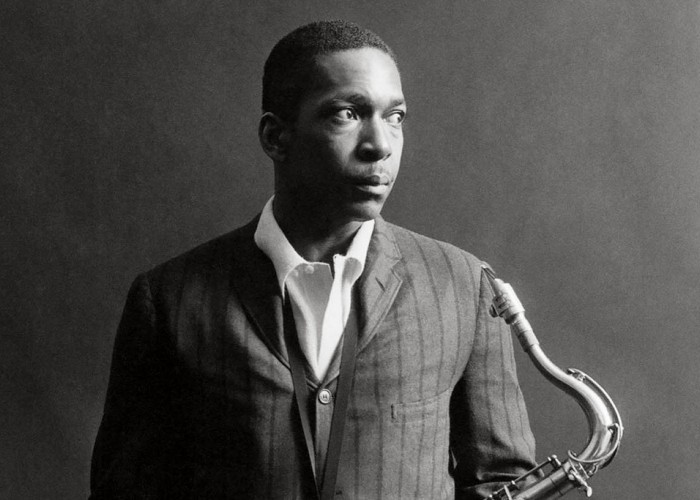Apr 2, 2024 12:59 PM
Saxophonist, Sonic Explorer Casey Benjamin Dies at 45
Casey Benjamin, the alto saxophonist, vocalist, keyboardist and producer who stamped his distinctive sounds on the…

John Coltrane’s Both Directions At Once: The Lost Album (Impulse!) was recorded in 1963 and only now is being released.
(Photo: Chuck Stewart)Walking into the cool interiors of the Van Gelder Studio in Englewood Cliffs, New Jersey, it’s hard not to feel a sense of awe at its unparalleled legacy of jazz recording. The first thing that catches your eye is the studio’s massive vaulted ceiling, its cedar panels and Douglas fir arches forming a vast cathedral-like space, suitable for recording, meditation or veneration of a historic jazz recording.
This was the setting for a June 11 listening session that gave journalists a preview of an album that was recorded in 1963 in this venerated space: John Coltrane’s Both Directions At Once: The Lost Album (Impulse!). Present for the event was the iconic saxophonist’s son, Ravi Coltrane.
“Some people thought John Coltrane was going to end jazz. That he was anti-jazz. [This music] was different from what the was the norm for jazz musicians at the time,” Ravi noted. “When John went with this music in 1961, particularly ‘Impressions,’ it was such a shift. It’s amazing to hear it today. It’s relevant, it doesn’t sound like old music. It sounds as modern as it did in 1963.”
As Both Directions At Once played over a pair of vintage studio monitors, Ravi closed his eyes and rocked slowly back and forth in his seat.
Coltrane’s beautiful soprano flowed throughout the studio space, leading your mind and eyes to wander. The tools of recording engineer Rudy Van Gelder’s art are hidden in corners and covered under tarps nowadays. Toward the end of his career, Van Gelder (1924–2016) preferred digital over analog recording equipment. Some of the earlier machines still are in the studio: an Ampex reel-to-reel tape deck wrapped in plastic, what appeared to be a McIntosh tube amplifier and an old acetate cutting lathe.
Van Gelder’s control booth was off limits to visitors. (His Neve console is now operated by Maureen Sickler.) The studio walls are adorned with Van Gelder’s nature photographs. Perched atop one of three isolation booths, a stuffed red cardinal stands sentry. Is this taxidermy simply for aesthetihics?
“If the drummer was too loud,” Sickler said, “the bird would fall off the ledge. It was one of Rudy’s testing devices.” DB

Benjamin possessed a fluid, round sound on the alto saxophone, and he was often most recognizable by the layers of electronic effects that he put onto the instrument.
Apr 2, 2024 12:59 PM
Casey Benjamin, the alto saxophonist, vocalist, keyboardist and producer who stamped his distinctive sounds on the…

“He’s constructing intelligent musical sentences that connect seamlessly, which is the most important part of linear playing,” Charles McPherson said of alto saxophonist Sonny Red.
Feb 27, 2024 1:40 PM
“I might not have felt this way 30 to 40 years ago, but I’ve reached a point where I can hear value in what people…

Albert “Tootie” Heath (1935–2024) followed in the tradition of drummer Kenny Clarke, his idol.
Apr 5, 2024 10:28 AM
Albert “Tootie” Heath, a drummer of impeccable taste and time who was the youngest of three jazz-legend brothers…

“Both of us are quite grounded in the craft, the tradition and the harmonic sense,” Rosenwinkel said of his experience playing with Allen. “Yet I felt we shared something mystical as well.”
Mar 12, 2024 11:42 AM
“There are a few musicians you hear where, as somebody once said, the molecules in the room change. Geri was one of…

Larry Goldings’ versatility keeps him in high demand as a leader, collaborator and sideman.
Feb 21, 2024 10:45 AM
Are you having any fun? Larry Goldings certainly is. Consider just two recent examples:
Scene 1: “If anyone had…